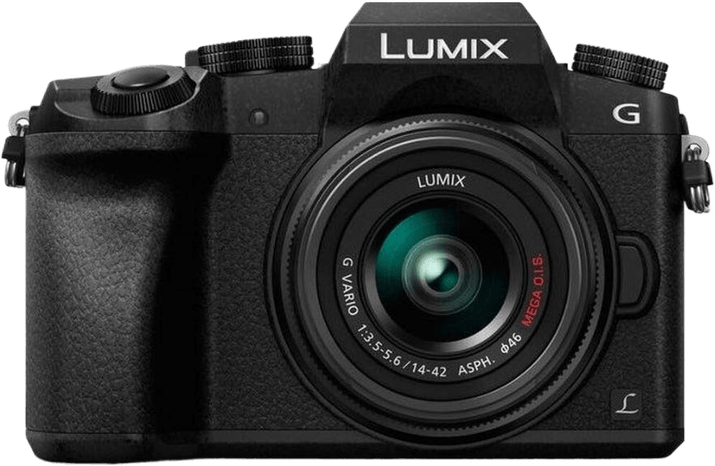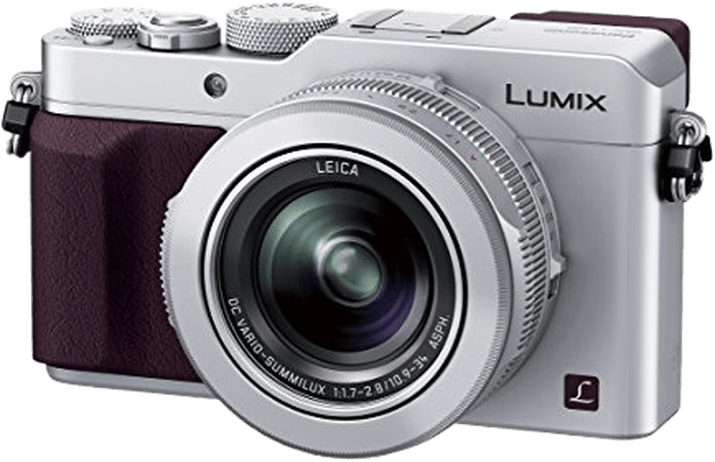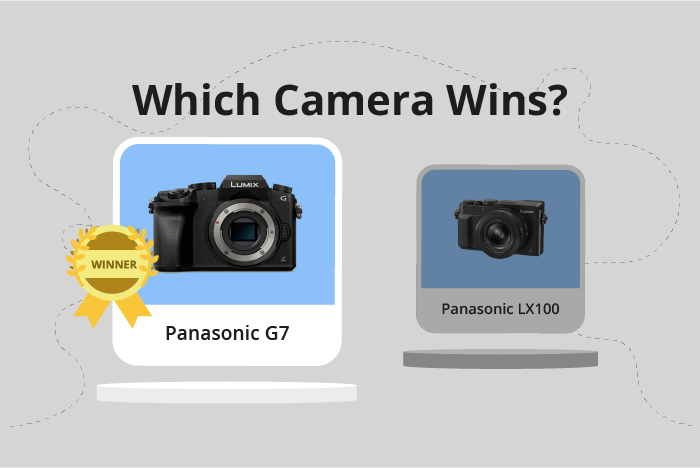Panasonic Lumix DMC-G7 vs Lumix DMC-LX100 Comparison
Panasonic Lumix DMC-G7

Panasonic Lumix DMC-LX100

The Panasonic Lumix DMC-G7 emerges as the winner with a score of 52/100, slightly ahead of the Panasonic Lumix DMC-LX100, which scores 49/100. Both cameras were released in the mid-2010s, with the G7 in 2015 and the LX100 in 2014. They share similarities in weight, with the G7 weighing 410g (0.90lbs) and the LX100 weighing 393g (0.87lbs).
The G7 outperforms the LX100 with its mirrorless camera type and lower launch price of $799, compared to the LX100’s $899. Additionally, the G7 is slightly larger, measuring 125 x 86 x 77mm, which may offer a better grip for users. On the other hand, the LX100’s compact camera type and smaller size of 115 x 66 x 55mm could appeal to those seeking portability.
Considering their different strengths and slight differences in specifications, the G7 is a better choice for users prioritizing affordability and camera type, while the LX100 is suitable for those who value portability.
Panasonic Lumix DMC-G7 vs Lumix DMC-LX100 Overview and Optics
The Panasonic Lumix DMC-LX100 takes the lead in optics with a score of 56/100, while the Panasonic Lumix DMC-G7 trails behind at 51/100. Both cameras share several specifications, including a CMOS sensor type, Micro Four Thirds sensor size, and shooting capabilities. However, there are key differences that set the two cameras apart.
The LX100 outperforms the G7 in several aspects. It has a faster shooting speed of 11 frames per second compared to the G7’s 7 frames per second. The LX100 also features image stabilization, a valuable addition for photographers aiming for sharp, steady shots. Although the LX100 has fewer megapixels (12.8) compared to the G7 (16), this does not significantly affect image quality, as both cameras provide high-resolution images.
On the other hand, the G7 has a higher DXOMARK sensor score of 75, indicating better overall image quality and low-light performance compared to the LX100’s score of 67. Additionally, the G7 has a Micro 4/3 lens mount, which allows for interchangeable lenses, providing users with more creative options. The LX100, with its fixed lens mount, does not offer this flexibility.
To conclude, the Panasonic Lumix DMC-LX100 surpasses the Panasonic Lumix DMC-G7 in optics, due to its faster shooting speed and image stabilization feature. However, the G7 offers advantages in its higher DXOMARK sensor score and interchangeable lens capability. Both cameras deliver quality images, but the LX100’s enhanced features make it the superior choice in terms of optics.
Panasonic Lumix DMC-G7 vs Lumix DMC-LX100 Video Performance
The Panasonic Lumix DMC-G7 emerges as the winner in video capabilities with a score of 83/100, while the Panasonic Lumix DMC-LX100 receives a score of 70/100. Both cameras have 4K video resolution, maximum video dimensions of 3840 x 2160, and built-in time-lapse functionality. However, the G7 outperforms the LX100 in certain aspects.
The Lumix G7’s superior video performance is primarily due to its higher maximum video frame rate of 60fps, compared to the LX100’s 30fps. This allows the G7 to capture smoother and more detailed video, especially in fast-moving scenes or when shooting slow-motion footage. This advantage makes the G7 a more versatile camera for videographers who require higher frame rates for various projects.
On the other hand, the LX100 still delivers high-quality 4K video and shares the same maximum video dimensions as the G7. Additionally, both cameras offer the convenience of built-in time-lapse functionality, which makes them suitable for capturing dynamic scenes over time. However, the LX100’s lower frame rate may limit its appeal to videographers who prioritize fluid motion in their footage.
Given the differences in video capabilities, the Panasonic Lumix DMC-G7 stands out as the better option for those seeking higher frame rates and smoother video performance. The Lumix DMC-LX100, while still offering 4K resolution and time-lapse functionality, may be more suitable for casual videographers or those who do not require the higher frame rate provided by the G7.
Panasonic Lumix DMC-G7 vs Lumix DMC-LX100 Features and Benefits
The Panasonic Lumix DMC-G7 outperforms the Panasonic Lumix DMC-LX100 with a feature score of 58/100 compared to 41/100. Both cameras share some common specifications, such as a 3-inch screen size, no GPS, Wi-Fi connectivity, and no Bluetooth. They also both have flip screens, allowing for versatile shooting angles.
The G7 has an edge over the LX100 in terms of screen resolution and touchscreen capability. With 2,360,000 dots, the G7’s screen resolution is significantly higher than the LX100’s 921,000 dots. This difference ensures a sharper and clearer display on the G7. Additionally, the G7’s touchscreen functionality allows for intuitive navigation and control, while the LX100 lacks this feature.
Despite its lower overall feature score, the LX100 has a few advantages over the G7. One advantage is its compact size, making it more portable and convenient for everyday use. The LX100’s smaller size does not compromise on image quality, as it still produces excellent photos.
To conclude, the Panasonic Lumix DMC-G7 is the better camera in terms of features, with a higher score and superior screen resolution and touchscreen functionality. However, the Panasonic Lumix DMC-LX100 remains a strong contender for those seeking a compact and portable camera with good image quality. Ultimately, the choice between the two cameras depends on the user’s priorities and preferences.
Panasonic Lumix DMC-G7 vs Lumix DMC-LX100 Storage and Battery
The Panasonic Lumix DMC-G7 outperforms the Panasonic Lumix DMC-LX100 in storage and battery, scoring 35/100 compared to the LX100’s 16/100. Both cameras have one memory card slot and accept SD, SDHC, and SDXC memory cards. However, the LX100 is also compatible with UHS-I cards.
The G7’s battery life is superior, offering 350 shots per charge, while the LX100 provides 300 shots. The G7 uses a DMW-BLC12E battery, whereas the LX100 relies on a DMW-BLG10E battery. Additionally, the G7 supports USB charging, which the LX100 lacks.
Despite the LX100’s lower score, its UHS-I compatibility offers faster read and write speeds, potentially enhancing performance. However, the G7’s longer battery life and USB charging capability make it the winner in storage and battery. Both cameras have their advantages, but the G7’s strengths provide more practical benefits for users.
Panasonic Lumix DMC-G7 vs Lumix DMC-LX100 – Our Verdict
Are you still undecided about which camera is right for you? Have a look at these popular comparisons that feature the Panasonic Lumix DMC-G7 or the Panasonic Lumix DMC-LX100:

